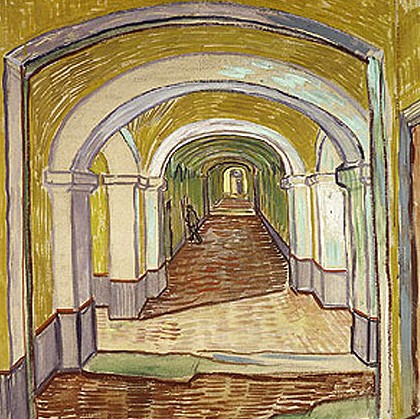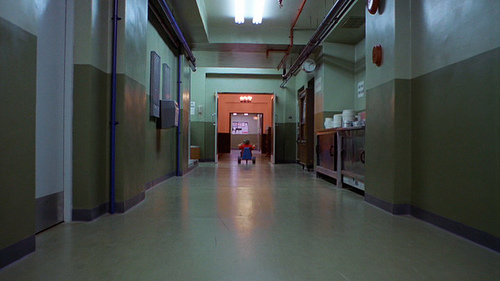Yesterday’s mail brought a fundraising letter from Lt. Gen. Josiah Bunting, III, a man of great distinction. Bunting asks for money on behalf of the Intercollegiate Studies Institute (ISI), a component of which, the Lehrman American Studies Center, he serves as President. The letter bothers me for four reasons.
1. Who’s there?
The unsolicited letter is written in a manner that’s sure to annoy more than a few recipients, and I wonder why ISI didn’t assign someone with the right skills to edit it, if only to sand down its grating style. Given Bunting’s long career as a writer, scholar, and educator, it’s hard for me to believe that he drafted, edited and finalized the document. Which is to say that when, in the paragraphs that follow, I indicate that “Bunting writes …” or “According to Bunting …”, I sincerely hope I’m wrong and that the text I’m citing is not in fact conveying his voice, his temperament and his knowledge, but instead is content furnished by ISI and anonymous staffers.
2. The familiarity ploy
Before the letter launches into histrionic mode (more about that, below), Bunting warmly addresses me as “Dear Friend,” and soon thereafter as “My friend.” Now, I swear I don’t know him from Adam, yet he says he knows me. An ersatz friendly tone is often found in charity fundraising letters, of course, following a template pushed by consultants. But Bunting says I (along with thousands of others who received the same letter) deserve a bear hug for good reason:
Your name has been given to me as a steadfast supporter of the preservation of America’s founding principles; a steward of freedom who cares deeply about the future of our nation.
Is he channelling Eddie Haskell or what? And yet, unctuousness aside, who am I to quibble with this glowing description of me? But, on the matter of familiarity, wouldn’t it be nicer, I’m thinking, to receive an unsolicited letter that displays honesty and humility? And for a model I turn to an uneducated fourteen year old named Huckleberry Finn, who, in his own overture to readers, in his very first words, confesses:
You don’t know about me . . .
So, anyway, I decided to dig deeper into the letter. And that’s when I came upon a creepy come-on, as I’ll describe next.
3. Questionable command of English
Here is the third sentence of the letter:
As a true American patriot, I know you are concerned about the direction of America’s colleges and universities.
Well. One thing I am a true believer in is English grammar and clear writing (while, Lord knows, I mess up all the time). A rule students learn in high school and are expected to obey in college and beyond is that a modifier (“a true American patriot”) should be placed as close as possible to the word it modifies (“you”). Although there are colloquial exceptions to the rule (in spoken English), the rule should be followed if there is a risk of confusion due to the presence of more than one noun/pronoun the modifier could be describing (here, both “you” and “I” are candidates). Bunting himself is half a century removed from his undergraduate degree in English, but rules are rules, and clear writing is timeless. If ISI truly intends to flatter the reader, or even if it’s just a ploy, the drafter should consider this formulation:
As a true American patriot, you are undoubtedly concerned about the direction of America’s colleges and universities.
The thought I resist is that the Lt. General is trumpeting his honorable military service and combining it with a boast of uncanny power to discern like-mindedness in others:
I, as a true American patriot, know you too are concerned about the direction of America’s colleges and universities.
In its original state the letter gives the impression of being either a slap-dash effort or a crude stage for chauvinism — a terrible irony in a letter requesting money to support improving higher education.
On to page two, where this plea pops up:
But, who’s going to climb a hill for others if their hearts are bitter towards their own culture?
Something is not right. The word “who” can be singular or plural. In this sentence it appears to be plural, referring to persons (plural) who possess hearts (plural). But the word “who’s” is a contraction of “who is,” a misplaced singular. The sentence needs not an “is” but the plural verb “are.” Or, in the alternative, the simultaneously singular- and plural-fitting verb “will” will do the trick, as in the sentence, “But, who will climb a hill for others …” Yet another possible reading of the sentence is that the author meant for the cited “hearts” to belong to the “others” for whom the single hill-climber is making a sacrifice. But this makes no sense in the context of Bunting’s argument, which is that young persons must be inculcated with unquestioned love of country (we must “nurture the next generation of patriots”), for if we do not, we will fail to produce citizens able to meet the demands of inevitable wars. Then again, the letter’s expository prose is so muddy at times that the reader may be unavoidably flummoxed.
In the first of his two post-scripts on page four, Bunting proudly informs us ISI’s charter says the organization’s headquarters “cannot be in the nation’s capitol.” Well, of course not. The word “capitol” (with an “O”) always refers to a building. Watch the cute video, here, on this point. The building housing our nation’s legislative branch is the U.S. Capitol. It was Thomas Jefferson who insisted the legislative building be called “the Capitol.”

It’s a large building, to be sure, but it would be the height of arrogance for ISI to think it had a chance of being located inside the nation’s capitol. In contrast, “capital” (with an “A” as the final vowel) refers to the District (see Article One, Section 8 of the U.S. Constitution) within which the federal government, and many a non-governmental organization, reside. The same capitol-versus-capital distinction applies at the state level. With this error, ISI, which sponsors the National Civic Literacy Board, earns a bonus point for irony.
Let me stop there, and express the hope that an intern with serious skills is hired to scrub through the next ISI letter prior to its release.
4. The culture war is here for you to join
What galls me is this: ISI’s presumption that I am on its side. I’m not speaking of the “side” in favor of improving classical education while strengthening all Americans’ understanding of our country’s long history and our nation’s uniqueness. On that ground I have my feet firmly planted, thanks to a superb liberal arts education. As a student of political science and history, and as a current participant in government, my mind and heart are there too. No, I’m referring to the letter writer’s assumption that I stand on his “side” in a great cultural war the far right desires to foment.
The letter is very clear on this point: the reader will be judged to be either “upholding the principles of the Founders” (values to be defined by . . . the Lt. General?) or found unworthy of “confidence.” For now, at least, I’m in Bunting’s good graces; he reports I have been tested and, in his words, “You have proven your dedication to the values upon which this country was built.” (Should I keep a copy of that certification in my wallet, in case I need it to pass through check-points, come the revolution?)
Presumptuous? Arrogant? Scary undertones of Big Brother? You betcha! The four page letter is chock full of radical right code words, phrases, and bêtes noires. An ideological slant is never far from the surface, and frequently bursts through. ISI says the American university system is being poisoned by a toxic culture. Students are paralyzed by revisionist liberals. A cadre of apologists (a term the letter neither defines nor assigns to named individuals) have made it their life’s work to disconnect our young people from the values and institutions that sustain a free and humane society. Moreover, if we do not act, the anti-freedom crowd will gain the upper hand in the fight for our future leaders’ hearts and minds. The letter closes with a statement that would fit nicely into a ritual session of Two Minutes Hate:
It is our job to expose them and I am counting on Americans like you to help us educate for liberty.
I am struck by what is absent from the text. Nowhere in four full pages addressing American principles does the word democracy (or any of its variants) appear. It seems Bunting believes the “nation’s heritage” ended before 1800, and so nowhere is there an appreciation of two centuries of subsequent history — a history forged by American people of faith and courage and intelligence equal to (or in the case of religious faith, exceeding) that of the leaders who emerged during the period of armed Revolution. The letter displays a fetishistic attachment to the Founding Fathers, to the exclusion of our grandly successful, ongoing American experiment. When describing today’s youth, Bunting casually tosses off calumnies (“their hearts are bitter towards their own culture”). These are the words of a curmudgeon blind to the actual lives and character of young Americans. (Say it ain’t so, Joe!)
I believe the study of history, which Bunting says he supports, shows America to be an unfinished nation. Our nation is still being created. This idea scares many people, I know. Many prefer the sclerotic over the dynamic. But the rest of us — and I believe we are the democratic (small “d”) majority — must steadfastly guard against the baleful consequences that would flow if personal fears prevailed. That is the true threat to our lives, our liberties, and our happiness.
Whenever I encounter someone arguing that the America they live in today is not the country of their youth, let alone the country as founded over two centuries ago, I’m reminded of W. S. Gilbert’s lines satirizing a particularly sorry fellow: “The idiot who praises with enthusiastic tone, all centuries but this, and every country but his own.” As with us all, time’s fell hand ultimately will sweep them from the scene.
I am struck by the aging of persons prominantly embracing a Manichean world view. I’m noticing, for example, how Pat Buchanan is becoming unsteady in his argumentation. Just this week he asserted, erroneously, that no blacks fought and died in the Vicksburg campaign (video, here; historical facts, here and here). Sadly, the reason Buchanan denies history is so he can argue white males have a superior claim of ownership of America, de facto (long exclusive possession) if not de jure. Also this week, in a different forum, Buchanan misquoted the Preamble to the U.S. Constitution in support of a related wacky argument, to the effect that the progeny of the Founding Fathers (white males) are the legitimate inheritors of a nation “created” back in 1787.
All of which goes to show, some folks way past their college years need remedial education in this nation’s history.
















